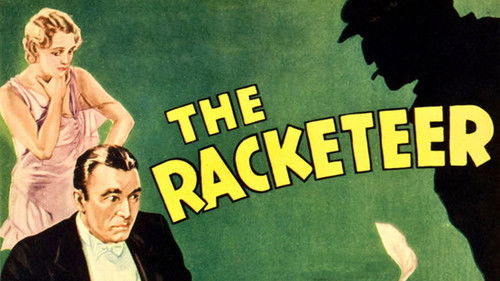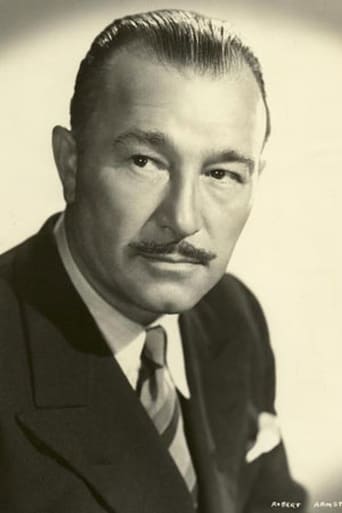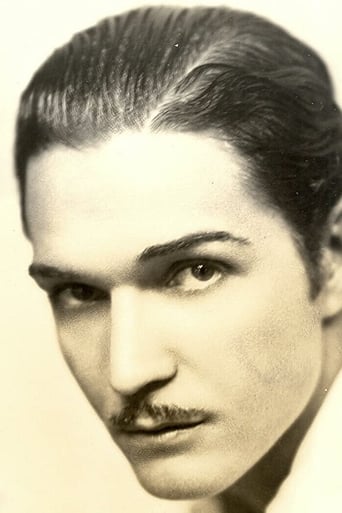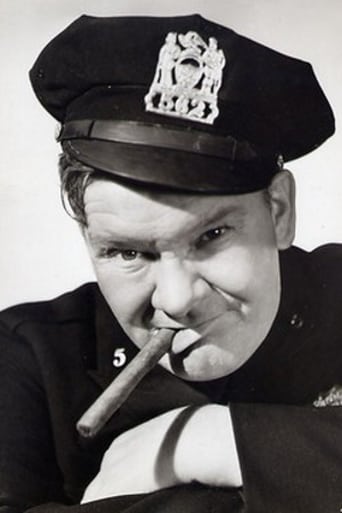Holstra
Boring, long, and too preachy.
Seraherrera
The movie is wonderful and true, an act of love in all its contradictions and complexity
Kaydan Christian
A terrific literary drama and character piece that shows how the process of creating art can be seen differently by those doing it and those looking at it from the outside.
Kimball
Exactly the movie you think it is, but not the movie you want it to be.
MartinHafer
Wow, was this version of THE RACKETEER tough to watch! While none of the other reviews have mentioned this, the public domain version I watched was seriously flawed. The sound track was off by about 10 seconds--meaning the dialog and action never came close to matching. So, you'd hear something occur well before you saw it--a very confusing proposition! The worst is where you hear a gun shot and only later doe the guy get hit and slump to his death in a taxi.While this seriously marred the film, it also made concentrating on the dialog easier--and showed the serious shortcomings of it as well. The dialog was simply awful--often delivered with almost no inflection or feeling. As one review said, it was like watching a high school play. Part of this is understandable, as sound was a new medium, but this film's dialog was bad even compared to other 1929 films--really bad. And, like many of these early sound films, the film was just too talky--with sappy and overly melodramatic language and just not much action. And you'd THINK with a title like "The Racketeer" that there would be some action!! However, it's really a sappy romance--with very little action.The film finds Carol Lombard straddled with an alcoholic musician. She herself ends up stealing to try to take care of him--and the crook, Robert Armstrong, comes to her assistance. When Armstrong catches her cheating at cards, he covers for her and then helps the drunk brother to get on his feet--and naturally he falls for her in the process. The problem is that once the drunk sobers up, he, too, wants Lombard and she needs to choose between them. Wow...a recovering drunk or a mobster...talk about a couple great prospects! Overall, it's a bit hard to rate considering the lousy print I saw. However, even if you ignore this, the film has a lot of problems due to its poor use of dialog and excessively talky nature. And...it was sappy too boot.
mgconlan-1
"The Racketeer" stars Carol (deprived of the "e" that usually appeared at the end of her first name) Lombard as a woman thrown out of society because she left her husband for a concert violinist (Roland Drew) who has since become a down-and-out alcoholic, and torn between her love for him and the interest of New York crime kingpin Robert Armstrong (top-billed). It's virtually a compendium of what was wrong with the earliest talkies: stiff direction, immobile cameras, stagy acting and ridiculously slow-paced delivery of lines. At the time the sound crews were telling the directors to have their actors speak every line s-l-o-w-l-y and not to start speaking their own line until after the previous actor had finished theirs. Done about five years later, this could have been an interesting movie, but director Howard Higgin faithfully follows his sound recorder's dictates and systematically undercuts the talents we know Lombard and Armstrong had from watching their later movies. "The Racketeer" was made in 1929, a year that despite the transition problems from silent to sound nonetheless gave us some legitimate masterpieces — Vidor's "Hallelujah!," Mamoulian's "Applause," Wyler's "Hell's Heroes," Capra's "Ladies of Leisure" — all from directors with strong enough wills to tell the soundboard dictators to get stuffed and let their actors talk and act naturalistically. Too bad Howard Higgin wasn't that strong; as it is, watching a naturally rapid-paced actor like Armstrong slog through the part in the ridiculous way he's been told to speak, one can't help but wonder where that 50-foot gorilla is when Armstrong needs him.
warmbear
Carole Lombard stars in this transition period film. This film is a typical example of a very early "talkie" (First practical sound film was "The Jazz Singer", 1927). Overall, the acting in this film tends to be extremely broad and very melodramatic.The viewer may easily note that the actors are still "acting" for a silent film, and this combined with the overly pronounced, overly earnest dialog (It seems most likely a diction-elocution-drama coach was employed extensively to teach the "silent" actors to speak lines), creates some rather comical scenes which were not at all intended to be comical.Carole Lombard's later great acting ability is all but unrecognizable underneath all the broad gestures, melodrama, and eager earnestness.Mainly interesting as an historical curiosity of the period, and for it's completely unintended comedy-camp value.
elginbrod2000
I enjoyed this 66 minute film despite the overly theatrical delivery of almost every line. One gets the impression that this film was directed by an eighth grade home economics teacher. Despite this annoying drawback, the story is sweet and there is a genuine chemistry between the leading lady, Carole Lombard, and the head gangster played by Robert Armstrong.Carole Lombard is attractively photographed and has a large amount of quality screen time here. She is pulled in two directions by two men who genuinely care for her. One is a concert violinist who we are introduced to early on in the picture as a man who has been reduced to nothing more than a bum in the gutter. The other is the suave gangster who for the first time has found something in this life greater than himself. The question is: who needs her most and who truly loves her? And in what direction will fate allow her to go.The dramatic ending will tug at your heart-strings. This was Carole's last picture for Pathe studios.






